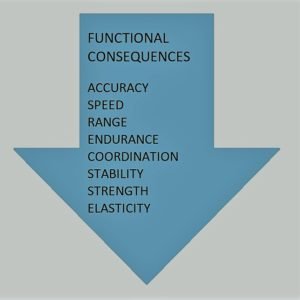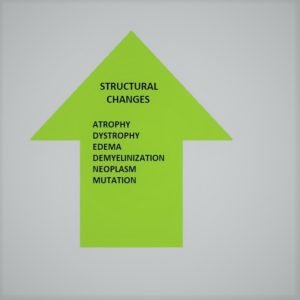 Can you actually slow down the aging process? According to studies, yes you can!
Can you actually slow down the aging process? According to studies, yes you can!  With age, our bodies will eventually break down and wear out as a law of nature, but we can slow down the process and live healthier, happier, and more independent lives if we treat our bodies right and get regular physical exercise.
With age, our bodies will eventually break down and wear out as a law of nature, but we can slow down the process and live healthier, happier, and more independent lives if we treat our bodies right and get regular physical exercise.
A consequence of cellular structural changes (see chart on the left) are almost always associated with profound behavioral changes and decline. (see chart on right)
Structural changes are changes that occur on a cellular level and include atrophy: the reduction in muscle size due to inactivity, dystrophy: a disorder arising from poor nutrition, edema: swelling, demyelinization: the destruction or removal of the myelin sheath of a nerve or nerves, neoplasm: an abnormal growth, and mutation: a permanent alteration of a genetic element. These cellular changes effect our behavior and function: our accuracy, speed, range, endurance, coordination, stability, strength, and elasticity. All the factors that effect our daily life.
People who are physically fit and active can slow down this process of aging and delay the effects. Epidemiological studies suggest that regular physical activity is associated with decreased risk of activities of daily living (ADL) disability in older adults. (Liu & Fielding, 2011 study)
Studies also show that even those with chronic illnesses can improve their physical function by remaining active and physically fit (ACSM, 2009). In 2008 the U.S. Department of Health & Human Services reported that only 5% of adults age 65 and older were considered “fit” meaning highly active people who should remain mobile into late life, baring injury or illness. 65% were considered “independent” meaning they are fully functioning people now, but low activity levels may cause physical declines, leading to frailty. 30% were considered “dependent or frail” – people who needed assistance with ADL’s.
Regular physical activity has important positive effects on the musculoskeletal, cardiovascular, respiratory, and endocrine systems. Furthermore, exercise decreases the risk of premature mortality, reduced the risk of coronary heart disease, hypertension, colon cancer and diabetes. In addition, participation in regular physical activity also reduces depression and anxiety, improves mood, and enhances an individual’s ability to perform daily tasks throughout his/her lifespan.
There is compelling evidence that regular exercise can assist in avoiding, minimizing and/or reversing many physical, psychological, and social hazards that accompany aging. (WHO’s Global Recommendations On Physical Activity for Adults, 2010).
To find out more about what you can do to become more physically active, contact me via email or my online form to set up a free consultation.











Leave a Reply